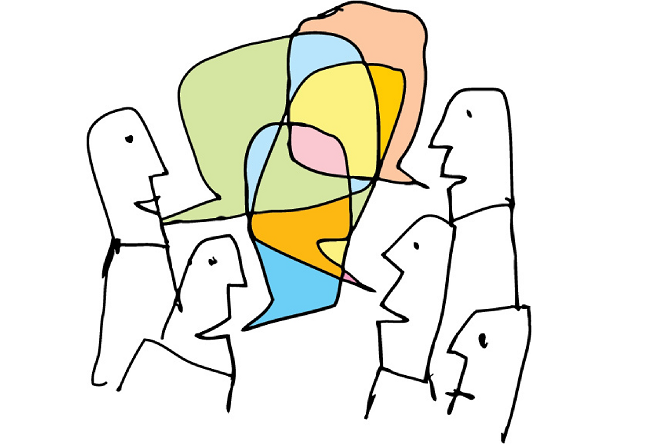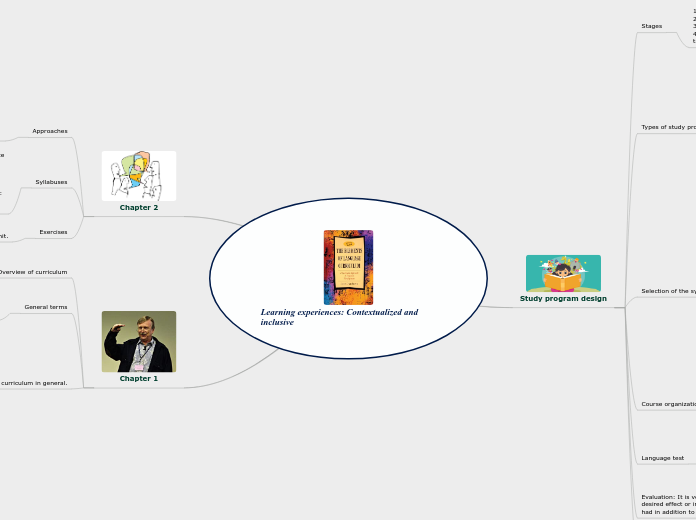
Learning experiences: Contextualized and inclusive

Study program design
Stages
1 Articulate beliefs and define the context.
2 Define needs.
3 Analysis and specification of the aims and objectives.
4 Decisions to make about what is what should be taught.
Types of study programs
Estructural: grammatical and phonological structure
Situations: must be in the background
Current: what would be topics or themes such as health, food, etc.
Functional: What are functions: identify, inform, correct, describe, etc.
Hypothetical also called as notions, they have a sense of chronology or usefulness, here may be the background
Task: is a category based on tasks or activities
Selection of the syllabus form
Linear format: it is adopted for the content of elements and a sequence and classification is given. Teachers cannot change the order of units or skip some
Modular format: well suited to courses that integrate content topics or situations
Cyclical formats: allows teachers and students to work on the same topic more than once but each time increasing its difficulty
Matrix format: this format provides flexibility and selecting topics from a table of contents in a random order the matrix is well suited to situational content
Story format: it is a narrative, it is of a different type than those mentioned can be used together with any of them
Course organization
-Identify course units.
-Determine the organizing principles
-Units sequence
-Determine the contents of the unit
-Organize unit content
Language test
This is based on the goals and objectives of the program.Test development requires the use of two different types of tests
The regulations that are intended to compare the performance of students and texts with reference to criteria intended to measure the amount of material. The materials are o serve to make decisions based on what you want students to learn in accordance with their goals and objectives and curriculum focus
Evaluation: It is verified if the study program has had the desired effect or indicates what effect this program has had in addition to identifying areas for improvement.
Conclusion: A syllabus refers to the subject content of an individual subject approaches to course design and how to define objectives

Chapter 2
Approaches
Brown (1995), approaches define the content of teaching and how students need to learn
Syllabuses
-The way in which students are taught the language since there must be planning and organization of what to do while teaching.
-Brown says that the study program is the same as the ways of organizing the course and the materials
-McJay (1978, p. 11) induces 7 types of study programs: structural, situational, actuality, functional, notional, skills and tasks.
Exercises
-Ways to practice the language
-Test or evaluate the students after the unit.

Chapter 1
Overview of curriculum
The objective is to train undergraduate teachers, capable of mastering the teaching of the English language and being able to improve teaching.
General terms
-Approach
-Procedure
-Design
General descriptions of the curriculum in general.
Anthony (1965) presents three important elements:
-Focus
-Method
-Technique
Richards & Rodgers (2017) the method is composed of three elements:
-Approach
-Design (three types of roles: students, teachers, and materials)
-Procedure (Description of the different techniques and activities).
